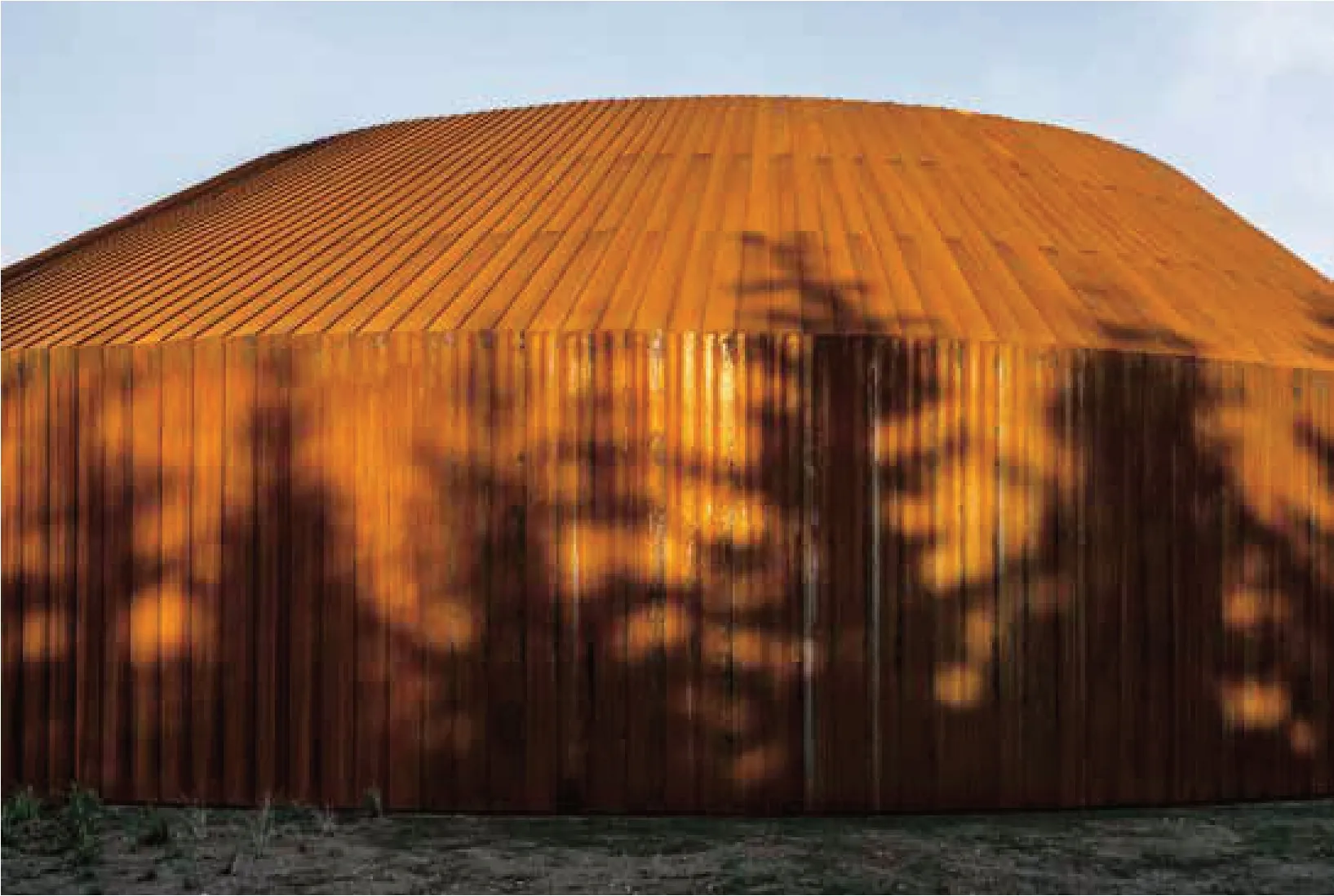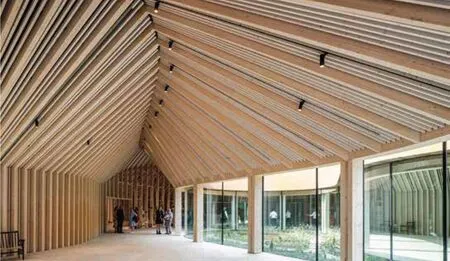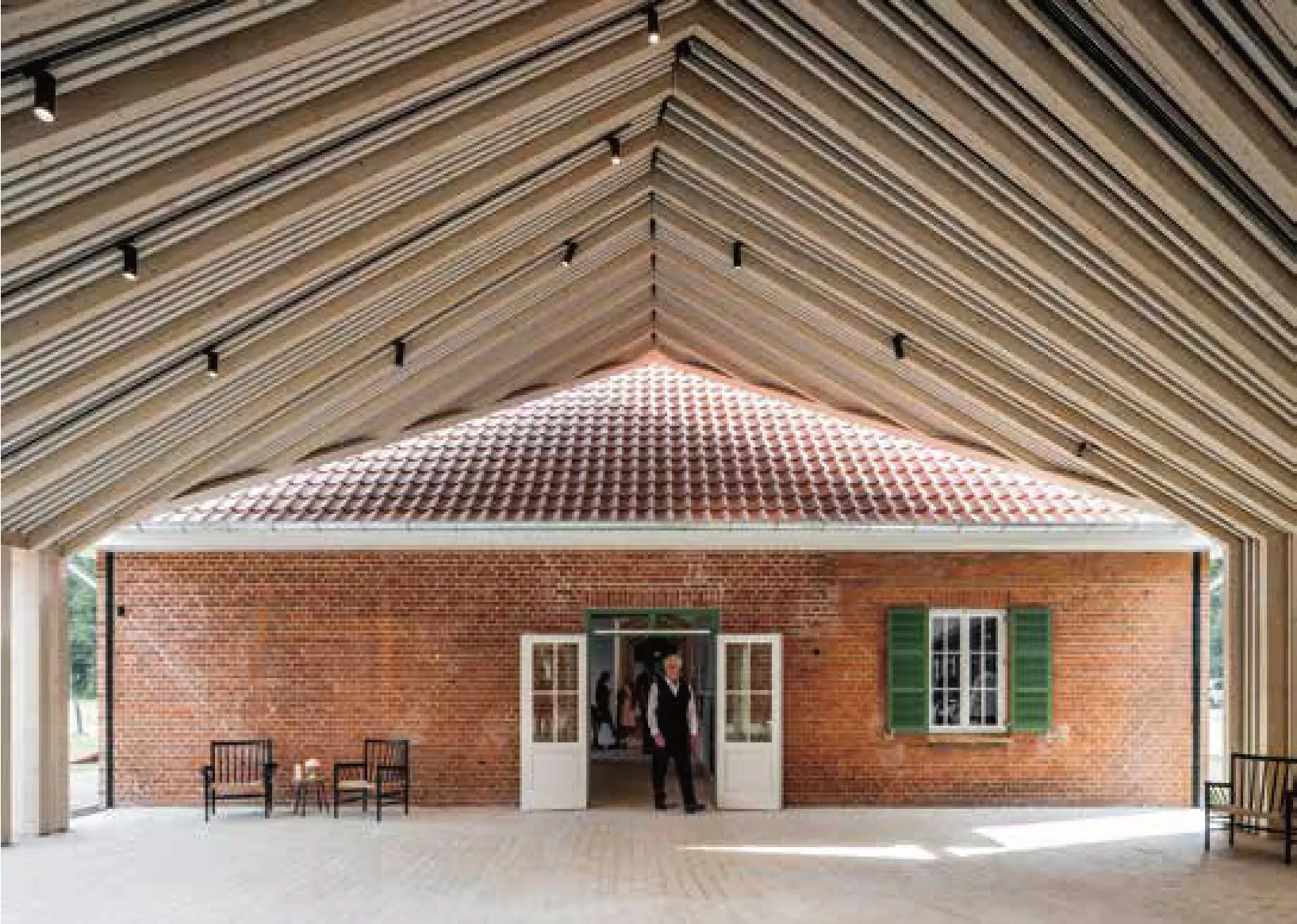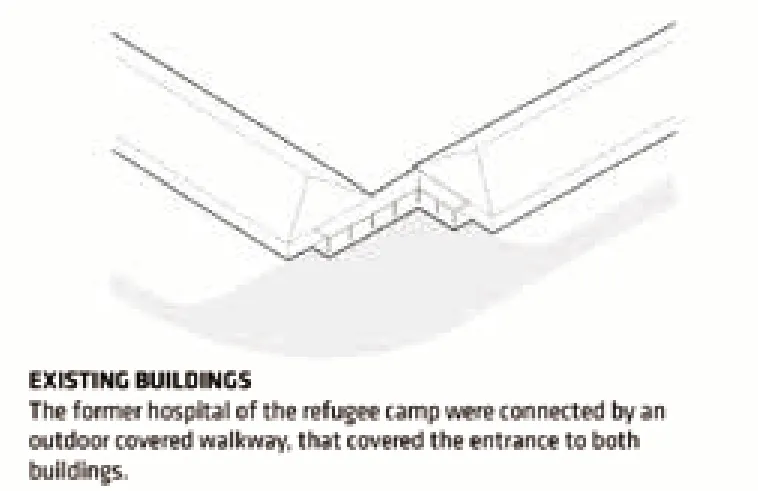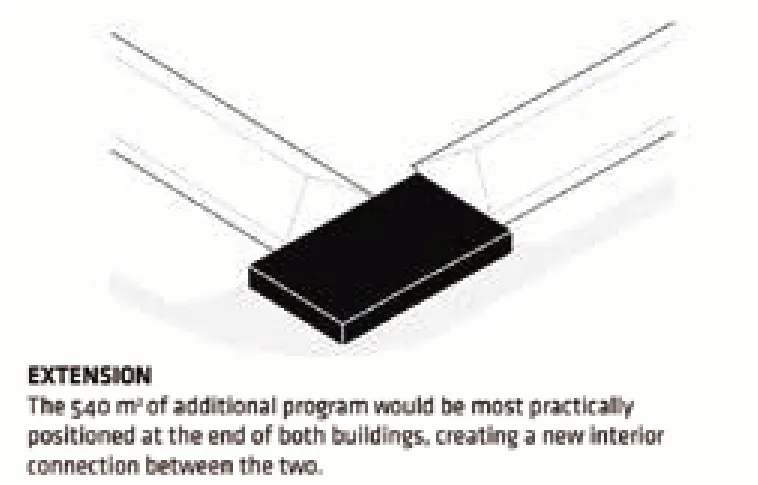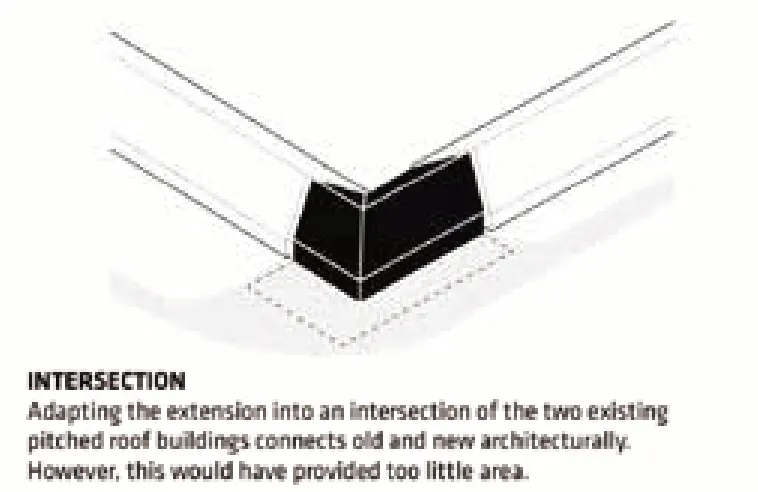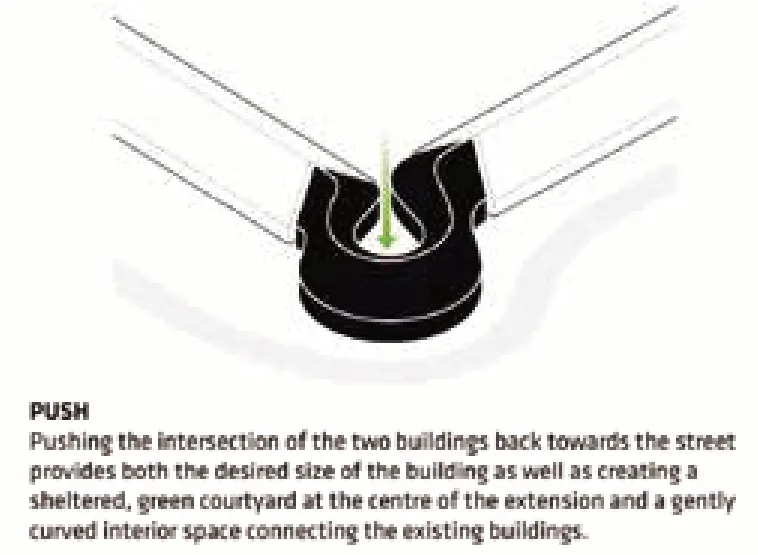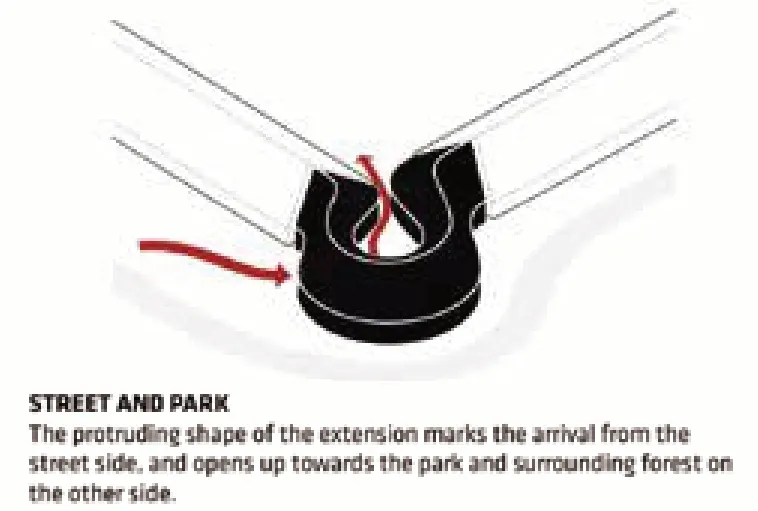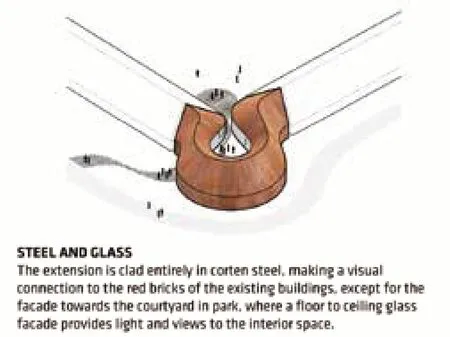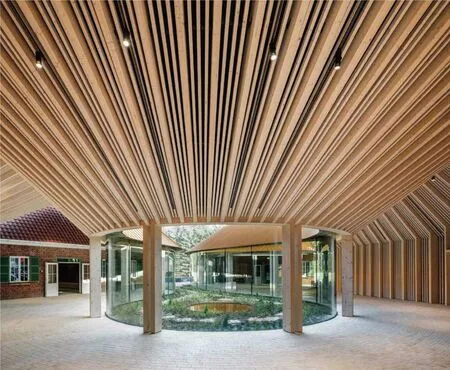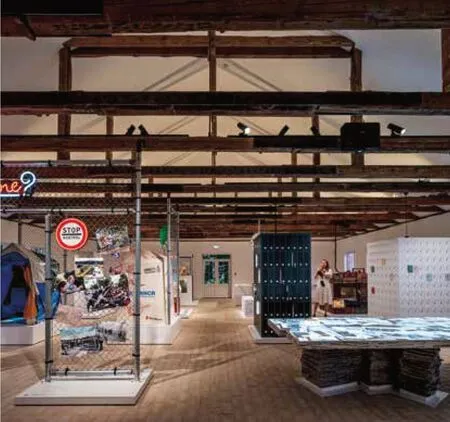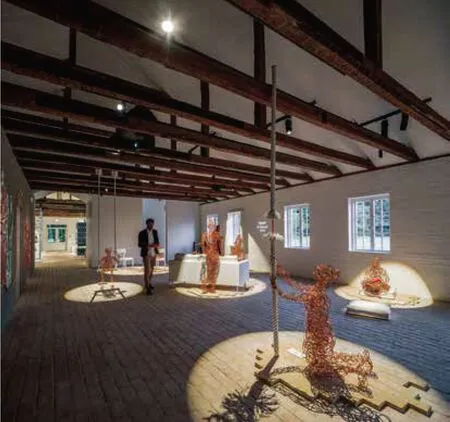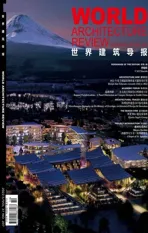丹麦难民博物馆 FLUGT 丹麦奥克斯伯尔
2022-11-16RasmusHjortshoj
业主单位:Vardemuseerne
主创建筑师 : Bjarke Ingels,Ole Elkjær-Larsen,Finn Nørkjær
项目主管 : Frederik Lyng
项目建筑师 : Frederik Skou Jensen
合作方:Johansson &Kalstrup,Tinker Imagineers,BIG Landscape
面积 : 1 600 平方米
项目年份 : 2022 年
摄影师 :Rasmus Hjortshoj
Client: Vardemuseerne
Partners-in-Charge: Bjarke Ingels,Ole Elkjær-Larsen,Finn Nørkjær
Project Leader: Frederik Lyng
Project Architect: Frederik Skou Jensen
Collaborators: Johansson &Kalstrup,Tinker Imagineers,BIG Landscape
Area: 1 600 m2
Project year: 2022
Photography: Rasmus Hjortshoj
丹麦难民博物馆FLUGT位于丹麦二战期间最大的难民营所在地“奥克斯伯尔区(Oksbøl)”,其致力于为世界各地的难民发声,并意在捕捉流离失所的人们所共同面临的巨大挑战、情感颠簸、精神考验及各自的故事等。继丹麦西海岸的提尔皮茨博物馆(Tirpitz Museum)的开幕后,丹麦难民博物馆 FLUGT是 BIG 为 Vardemuseerne 所设计的第二个博物馆。Vardemuseerne是一个致力于考古、传播和收集区域当地历史知识的本土研究机构。此外,在这一项目中,BIG与工程团队Ingeniør’ne、展览体验设计团队Tinker Imagineers共同合作,将这个曾经的难民营中仅存的少数建筑之一“医院大楼”改造、扩建为一个 1 600 平方米的博物馆。
博物馆所在的瓦德自治市(Varde Kommune)曾一度成为丹麦第五大的城市,仅有位于奥克斯伯尔区的少数难民营留存至今。虽然难民营已经消失,但是人们颠沛流离地前往一个新国家的历史故事依旧重要。项目中,该难民营曾经的医院大楼由两栋长型建筑组成,而BIG则在这两栋建筑之间添加了一个柔和的蜿蜒体量,由此在空间和时间维度上将两栋分离的建筑联系在了一起,构筑了全新的丹麦难民博物馆FLUGT,并在原有的建筑基础上增添了500平方米的空间,从而创造了一个从远处就可以识别的独特结构。
新筑的弯曲体量仿佛被轻轻地拉向街道,由此为博物馆参观者创造了一个引人入胜的抵达空间。此外,新筑部分的立面由耐候钢覆盖,从而延伸了已有医院大楼的红砖的色彩,并给人以宾至如归的感觉。从外面看,博物馆抽象的体量迎接着参观者走入看似封闭的入口大厅。当参观者进入建筑后,他们将透过从地板延伸至天花板的通高弧形玻璃墙,看向曾经难民营的所在地,并欣赏现在此处所有的遮阴绿色庭院及森林。同时,庭院的设计让光线可以自然地流入大厅空间,而大厅空间既可以是入口大堂也可以是临时展览空间,由此游客在这里可以开始他们的参观之旅,并继续进入博物馆的侧翼了解更多关于难民的故事。
Located at the site of Denmark’s largest Refugee camp from World War II,FLUGT,gives a voice and a face to refugees worldwide and captures the universal challenges,emotions,spirit and stories shared by displaced humans.FLUGT is BIG’s second museum for Vardemuseerne: a local institution dedicated to archaeology,dissemination,and collection of historical knowledge about the region.BIG has adapted and extended one of the camp’s few remaining structures– a hospital building– into a 1 600 m2museum.
At its peak,the camp became the fifth-largest city of Denmark at the time.Today,little of the camp in Oksbøl remains,but the story of arriving at the doorstep of a new country is as relevant as ever.The former hospital,which is transformed into FLUGT,is comprised of two elongated buildings.BIG has connected the two buildings architecturally and historically by adding a soft curve-shaped volume which brings 500 m2of additional space to the museum and creates a welcoming structure,visible from afar.
The curve is gently pulled towards the street to create an inviting arrival moment for the museum visitors.Clad in Corten steel,the structure feels at home along the red bricks of the former hospital buildings.From outside,the abstract volume welcomes visitors into what appears to be a closed entry hall.Upon entering,a floor-to-ceiling curved glass wall reveals a view of a sheltered green courtyard and the forest,where the refugee camp used to be.The courtyard lets light flow into the entry hall that functions as a lobby or a temporary exhibition space for guests to experience before continuing their journey into one of the museum wings.
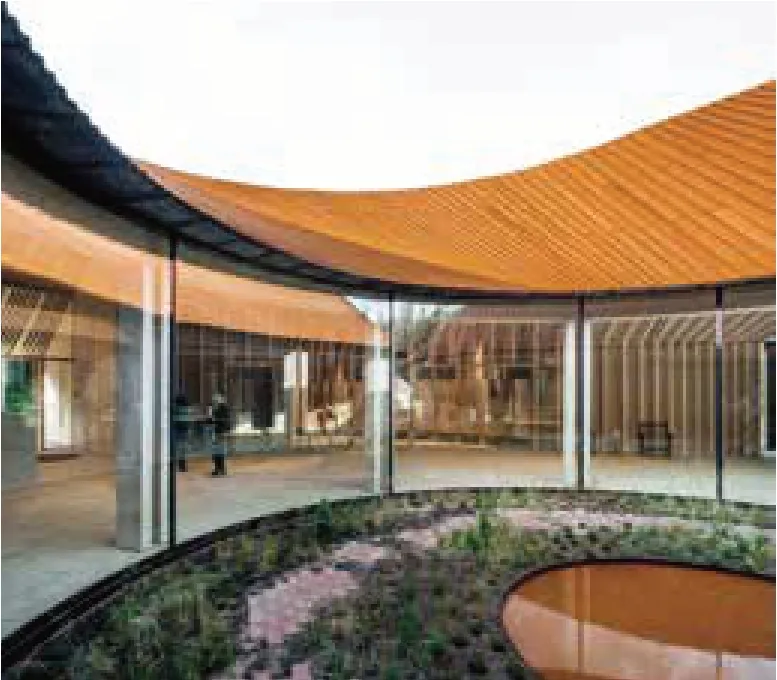
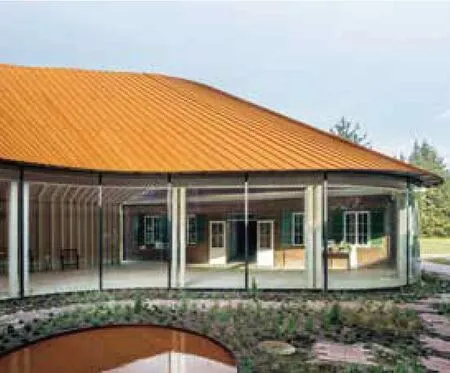
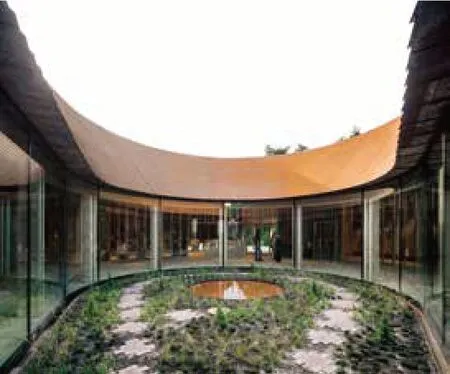
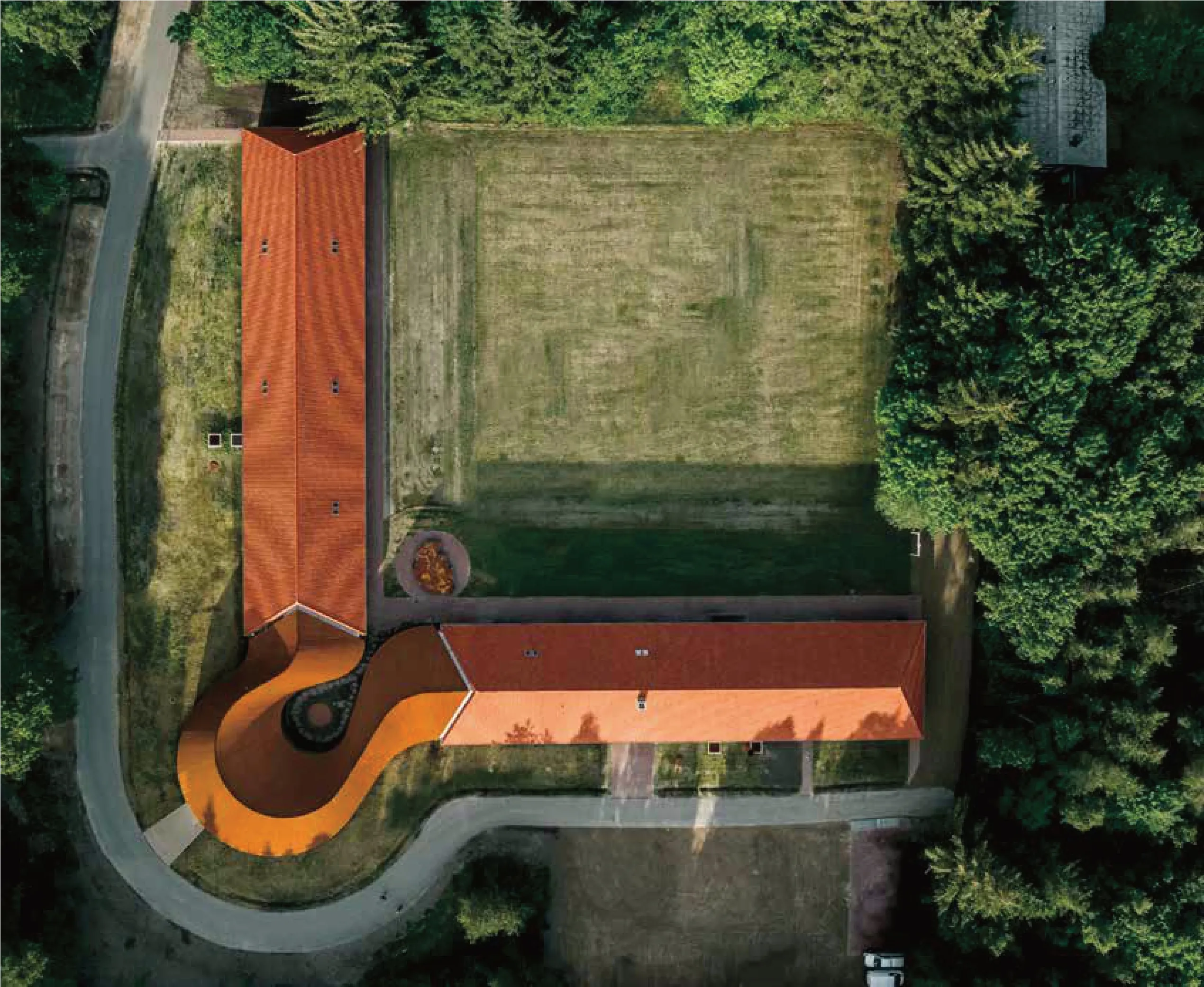
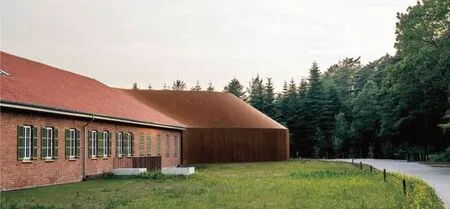
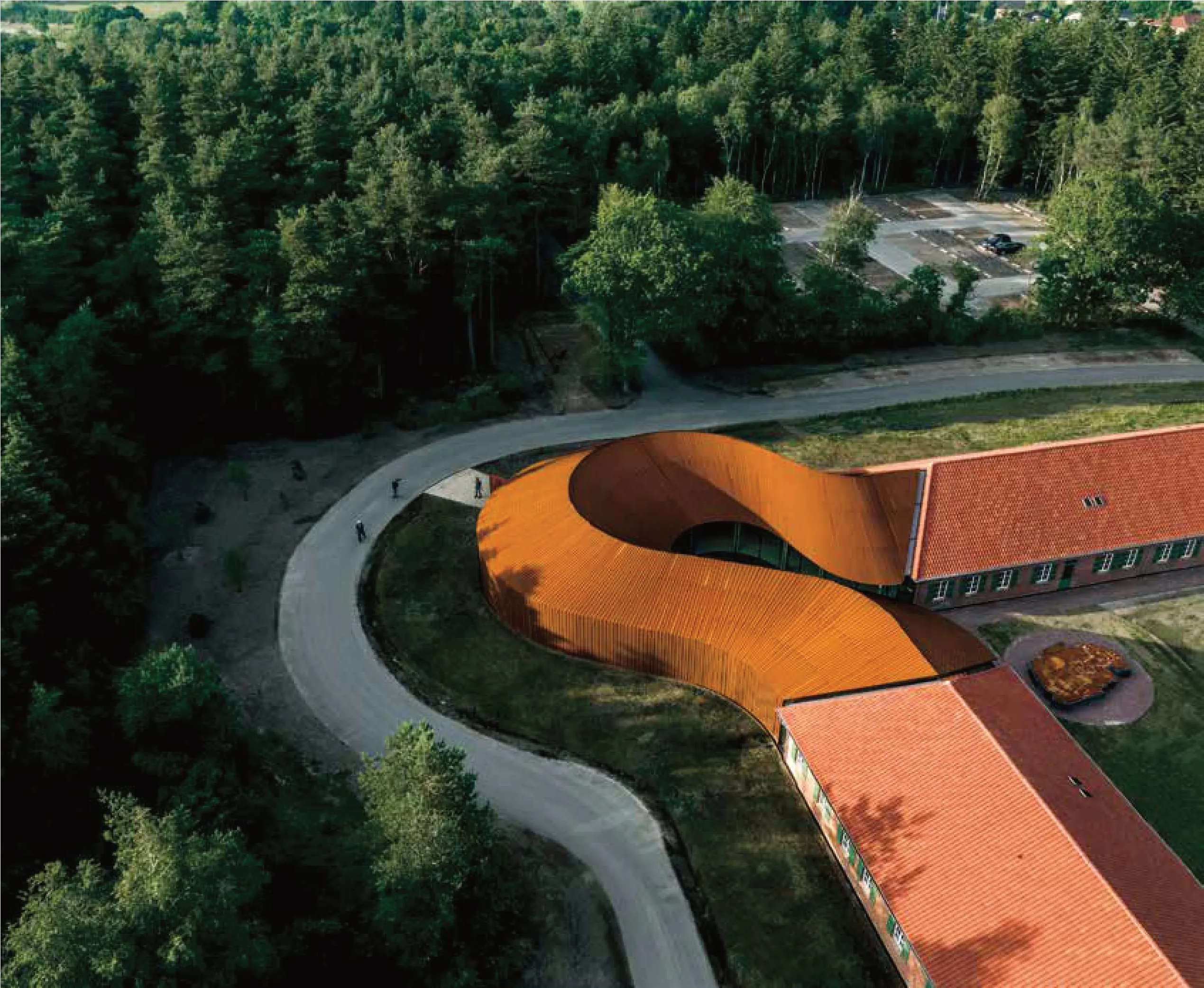
博物馆北翼的展览区囊括了根据医院原有流线、走道设计改造的全新画廊空间。虽然大部分的病房墙体已被拆除,但是建筑师仍保留了部分内墙的完整,并通过强化其三处横截面以固定老旧的墙体,以此创造了更大的展览空间。博物馆南翼则设有灵活布置的会议室、小型展览空间、咖啡厅及服务功能区。在南翼空间中,白色的墙壁及空间交界处由白色油漆木板装点,并且这些白色木板纹理方向根据天花板线的变化而变化。此外,博物馆层主要由黄砖装点,从而连接了属于这里的过去与现在。
丹麦难民博物馆FLUGT的设计不仅保存并再利用了原有的医院大楼,并且强调了其历史价值,这一建筑还延长了现有架构的使用寿命,同时也帮助BIG促成了减少浪费、节约能源、减少材料制造及运输方面的碳足迹的设计使命。
由BIG景观部门设计的庭院为博物馆的内外空间营造了静谧的感官体验。庭院的中心有着一个镜池,由此映射着天空的色彩。此外,建筑师还在场地盆地周围种有当地有名的植物帚石楠(Heather),从而强调了这一区域的特色。参观者将在此体验丹麦历史上重要的场所,并对难民们的经历产生全新的的反思。
The exhibition area in the north wing contains gallery spaces organized according to the original flow/circulation in the hospital.While most of the hospital room walls were torn down,some of the inside walls are kept intact and stabilized by three cross sections,creating larger exhibition spaces.The south wing features a flexible conference room,smaller exhibition spaces,cafe,and back of house functions with the same character and materiality as in the north wing: white walls and intersections covered in white painted wood boards oriented according to the angle ceiling line,as well as yellow bricks across the entire museum floor,connecting past and present structures.
In addition to preserving and reusing the hospital buildings for historical value,extending the lifespan of the existing structures supports BIG’s mission of reducing waste,conserving resources,and creating a smaller carbon footprint as it relates to materials manufacturing and transport.
The courtyard designed by BIG Landscape creates a peaceful sensory experience inside the museum as well as outside.A small mirror pool in the heart of the courtyard reflects the sky above it.Around the basin,heath planting known from the region emphasizes the identity of the area.Visitors leave the museum having experienced a part of an important place in Danish history,with a new perspective on the refugee experience.
